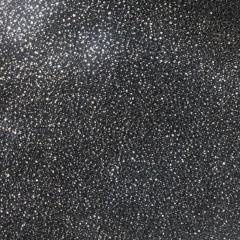AL metallic foam, also known as aluminum metallic foam, is a lightweight material with a unique cellular structure. It is created by injecting gas or a foaming agent into molten aluminum, resulting in the formation of gas bubbles throughout the metal matrix. These bubbles create a foam-like structure, giving the material its distinctive properties.
Properties and Advantages:
Lightweight: AL metallic foam is exceptionally lightweight due to its cellular structure, making it an ideal material for applications where weight reduction is critical.
High Strength-to-Weight Ratio: Despite its lightweight nature, AL metallic foam exhibits impressive strength-to-weight ratio, providing structural integrity and load-bearing capabilities.
Energy Absorption: The foam structure of AL metallic foam allows for efficient energy absorption, making it suitable for impact and crash protection applications. It can effectively absorb and dissipate energy, reducing the impact force in collisions.
Thermal and Acoustic Insulation: The cellular structure of AL metallic foam provides excellent thermal and acoustic insulation properties, making it useful in applications that require temperature or sound control.
Enhanced Vibration Damping: AL metallic foam can effectively dampen vibrations and reduce noise transmission, making it valuable in industries such as automotive and aerospace, where vibration control is crucial.
Corrosion Resistance: Aluminum is naturally corrosion-resistant, and the foam structure of AL metallic foam provides an additional layer of protection against corrosion, enhancing its durability and longevity.
Applications:
Automotive Industry: AL metallic foam finds applications in automotive components such as bumpers, crash boxes, and impact energy absorbers to enhance safety and reduce vehicle weight.
Aerospace and Defense: It is used in aircraft structures, interior panels, and vibration dampening components to reduce weight and enhance performance.
Construction and Architecture: AL metallic foam can be utilized for lightweight building structures, insulation panels, and soundproofing materials.
Energy Absorption and Impact Protection: It is employed in protective gear, sports equipment, and packaging to absorb energy and minimize impact forces.
Heat Exchangers and Thermal Management: AL metallic foam can be used in heat exchangers, where its lightweight and excellent thermal conductivity properties facilitate efficient heat transfer.
Filtration: The porous structure of AL metallic foam makes it suitable for applications such as filtration of gases and liquids.
Conclusion:
AL metallic foam offers a unique combination of lightweight design, strength, energy absorption, thermal and acoustic insulation, vibration damping, and corrosion resistance. Its versatility makes it an attractive material for various industries, ranging from automotive and aerospace to construction and filtration. As research and development in foam technology continue to progress, AL metallic foam holds great potential for advancing innovative solutions in different fields.
Relevant metal foam products: Aluminum foam, Cu Foam, Nickel Foam, Iron Nickel Foam, Stainless Steel Foam

 Daisy@foam-material.com
Daisy@foam-material.com
